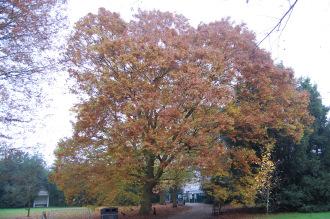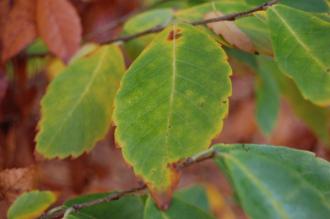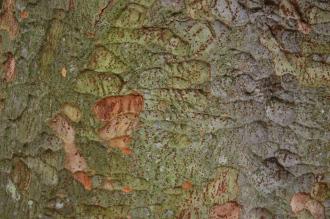
Zelkova sinica (30/11/14, Kew Gardens, London)
Position: Full sun to partial shade
Flowering period: Spring
Soil: Moist, well drained
Eventual Height: 25m
Eventual Spread: 15m
Hardiness: 5a, 5b, 6a, 6b, 7a, 7b, 8a, 8b, 9a
Family: Ulmaceae
Zelkova sinica is a deciduous tree with a vase shaped habit whilst young, maturing to a rounded head and often with multi stems. Its dark green leaves are ovate to elliptic with crenate margins, rough on the upper surface, up to 6cm long and 35mm broad. Its leaves turn yellow/ orange before they fall in autumn. Its trunk may achieve a diameter of up to 60cm. Its bark is smooth and grey/ white with pronominal lenticels. Its yellow/ green flowers are inconspicuous, appear in the leaf axils and wind pollinated. Its fruit is a wingless drupe, up to 7mm in diameter, initially green, maturing to a brown color.

Zelkova sinica Leaf (30/11/14, Kew Gardens, London)
Zelkova sinica, commonly known as Chinese Zelkova, is native to north central China. In its native habitat it grows on river banks.
The etymological root of the binomial name Zelkova is derived from the Caucasian name for this tree ‘tselkwa’. Sinica is from the Latin meaning ‘of China’.
The landscape architect may find Zelkova sinica useful as an attractive parkland tree. This tree is tolerant of urban conditions.

Zelkova sinica Bark (30/11/14, Kew Gardens, London)
Ecologically, Zelkova sinica seeds are attractive to some mammals and birds.
Zelkova sinica prefers moist, fertile, well-drained soils. It tolerates most pH of soil.
Zelkova sinica requires little maintenance.

